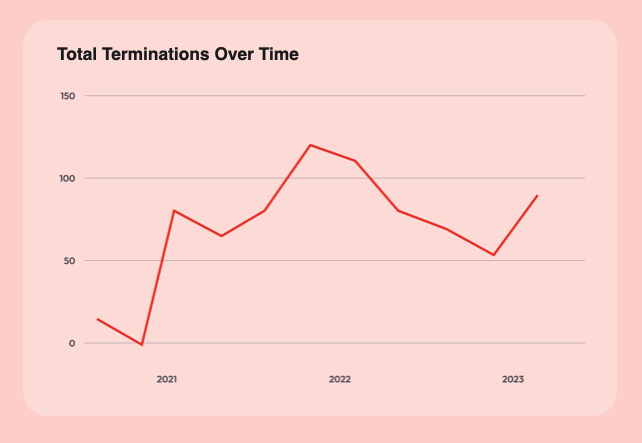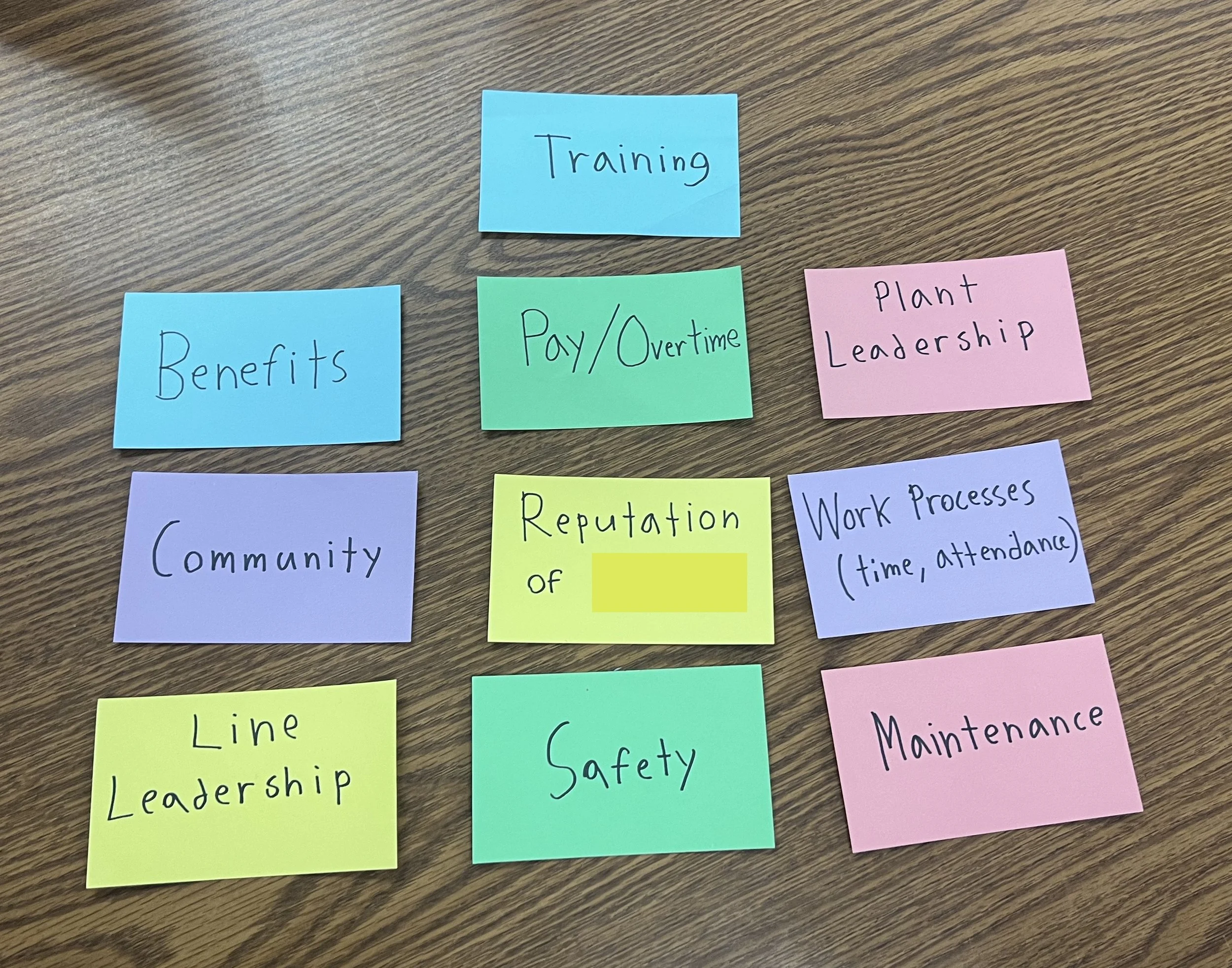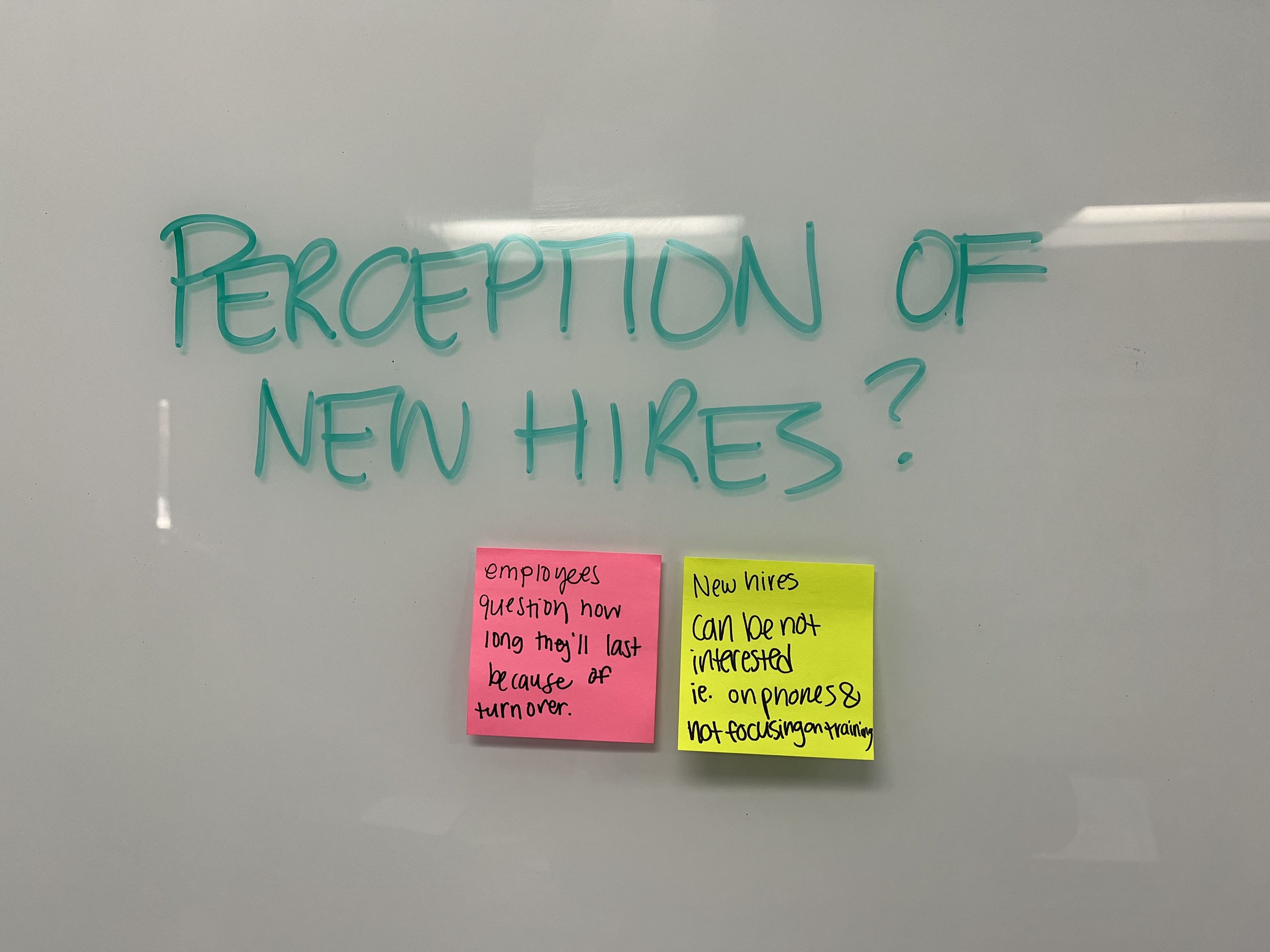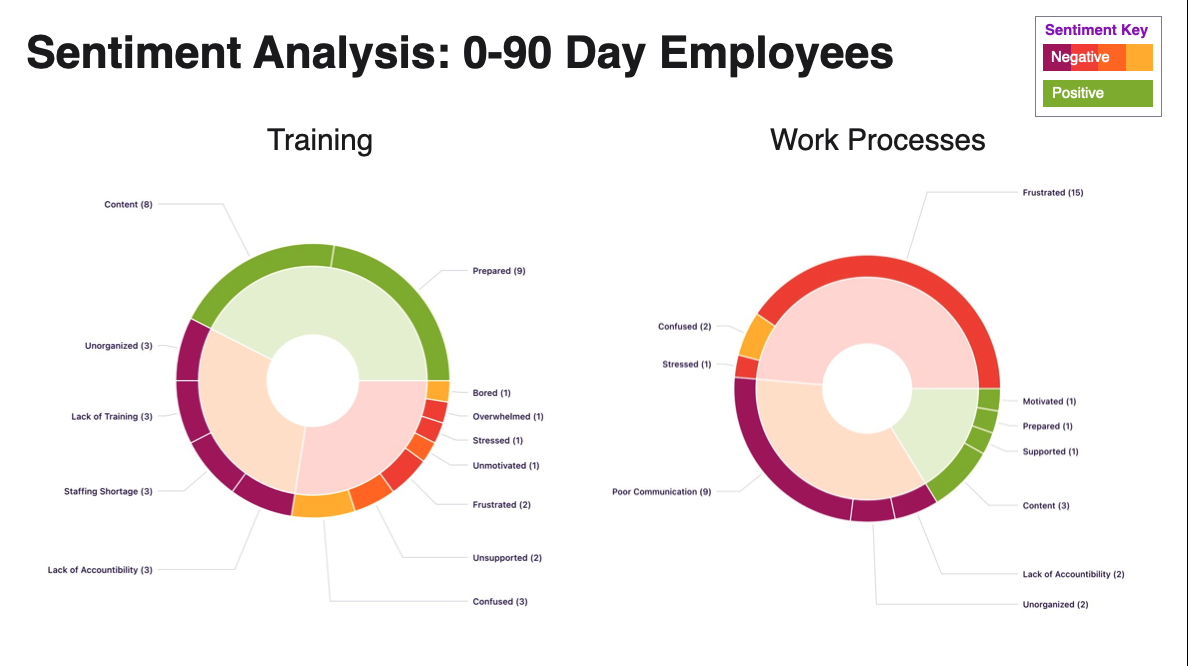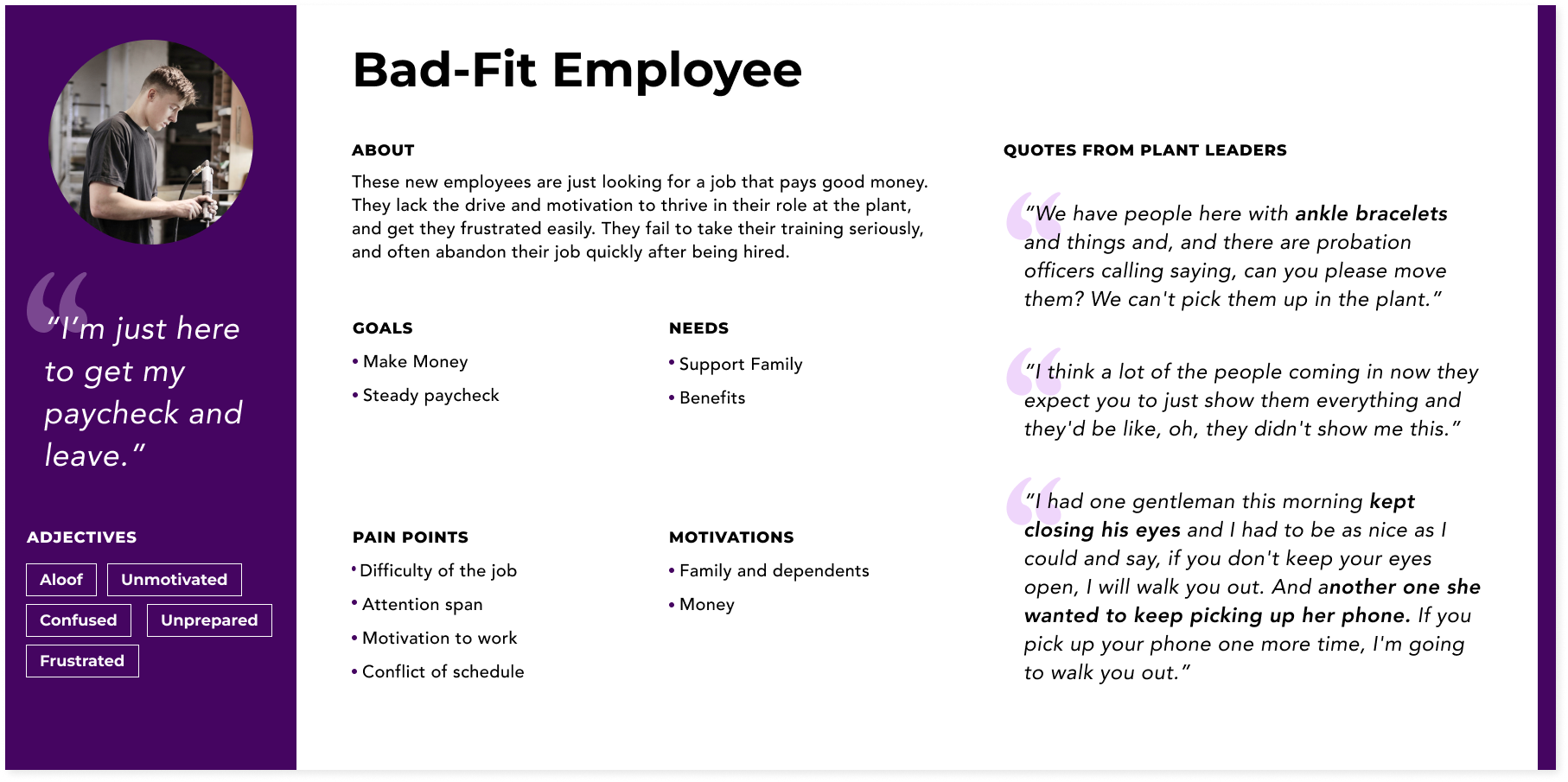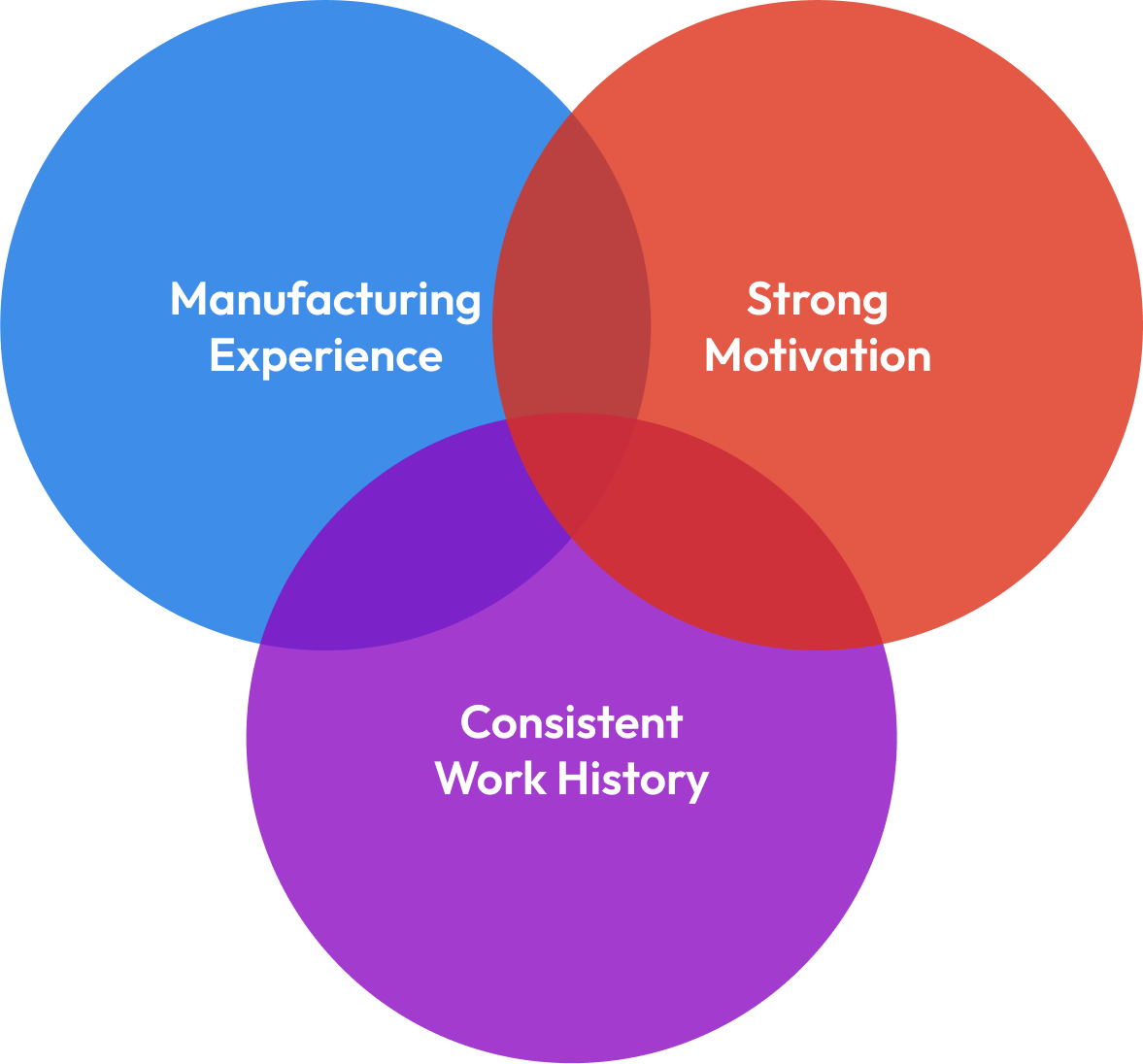Factory Employee Attrition UX Research
Employer: NTT Data (2023)
Overview
Our client, an international car battery manufacturer, is experiencing a high attrition rate among its employees at multiple factories. More specifically, employees who have been on the job for 90 days or less are abandoning their positions unusually rapidly. My team's job was to visit one of their factories and conduct employee experience research. We were tasked with uncovering the root of the attrition issue as well as recommending high-level solutions.
Research Methods
We decided to apply two main experience research techniques on-site at the factory:
1:1 interviews with employees who had been at the factory for 90 days or less
Focus groups with the more experienced employees at the plant
For the 1:1 interviews, we employed a card sort activity. This involved writing down the ten most relevant conversation topics on note cards. Then, during each interview, we asked the interviewee to select which topic cards they wanted to discuss. The card sort activity allows the interviewee to drive the conversation towards what brings up their strongest emotions. This gave us extremely rich qualitative data and insights into the experiences of these employees.
cards from the card sort activityThe focus groups were a bit more loosely structured, so our group sizes ranged from as small as 2 to as large as 7 participants. Participant roles ranged from HR, line managers, to plant leadership. During each focus group, we asked three main questions:
What’s the perception of new hires?
What’s good about new hires?
What needs improvement? (in terms of new hires)
These questions sparked free-flowing conversations among participants. While one of my team members led the session, my coworker and I captured insights on sticky notes and placed them in categories on the whiteboard. This research method was useful because it broke the tension between us and the participants. It can be nerve-wracking for these types of employees to speak to consultants like us, so building trust quickly during both the focus groups and interviews was an essential step.
sticky notes from a focus groupResearch Findings
To synthesize our data from the user testing sessions, we used Dovetail to tag each interview recording for sentiment analysis. During this process, we uncovered the two main pain points affecting this plant: Training and Work Processes.
Training: Training is a very disparate experience for new hires. A lot of our interviewees had great training experiences and felt confident in their roles. Others described situations where their trainer took a break while making them do all their work on the line.
Work Processes include onboarding, scheduling, work comms, and HR. We learned through our interviews that there is very little digital infrastructure at this plant. For example, employees must rely on texts from coworkers or managers about shift changes because the only way to see your shift schedule is inside the plant itself.
Sentiment analysis from interviewsWe also used the data we collected to create our personas. We identified 3 distinct groups of 0-90 day employees that fit the following archetypes:
Bad-Fit new hires lack both the skillset and motivation to do their assigned jobs effectively. They pay little attention during training and abandon their posts quickly.
Good-Fit new hires also lack experience, but they have the drive and motivation to build their careers. If nurtured and encouraged, these employees can become productive workers in the factory
Perfect-Fit new hires are the diamond in the rough. They have both the experience and motivation needed to succeed at the plant. However, they are a hot commodity and must be actively recruited.
one of our employee personasWe combined our findings into what we called the Plant Attrition Cycle. This tool shows how certain problems at the plant feed into each other and create a dangerous feedback loop. The stages of this cycle are:
An Understaffed Plant leads to the need to hire many new employees quickly.
Unfit New Hires are then hired while ignoring qualities in candidates that would make them a bad fit for the plant.
This leads to Unsuccessful Training of new hires due to the lack of quality trainers and unmotivated trainees.
This leaves new hires with Unmet Expectations due to a perceived lack of earnings or being unprepared for their roles in the plant. New hires then quickly abandon their jobs and worsen plant attrition.
The plant attrition cycleRecommendations
We synthesized high-level recommendations for the plant that would help them reduce new employee attrition. These suggestions can be summed up in the Sustainable Staffing Cycle, which is an inverted version of our Plant Attrition Cycle from earlier. Our recommendations fell into the following categories:
Recruiting: Add extra incentives for potential hires with previous manufacturing or machinery experience and ramp up active recruitment at job fairs, high schools, local colleges, and other manufacturing facilities
Hiring: Take time to seek candidates with a positive attitude, team player mentality, growth mindset, and a consistent work history
Training: Create standard training programs for each job role and promote high-performing trainers to dedicated training roles
Employee Appreciation: Reward perfect attendance and high performance. Create regular meetings where new hires can meet with superiors to address their feedback and concerns
sustainable staffing cycleideal employee qualities